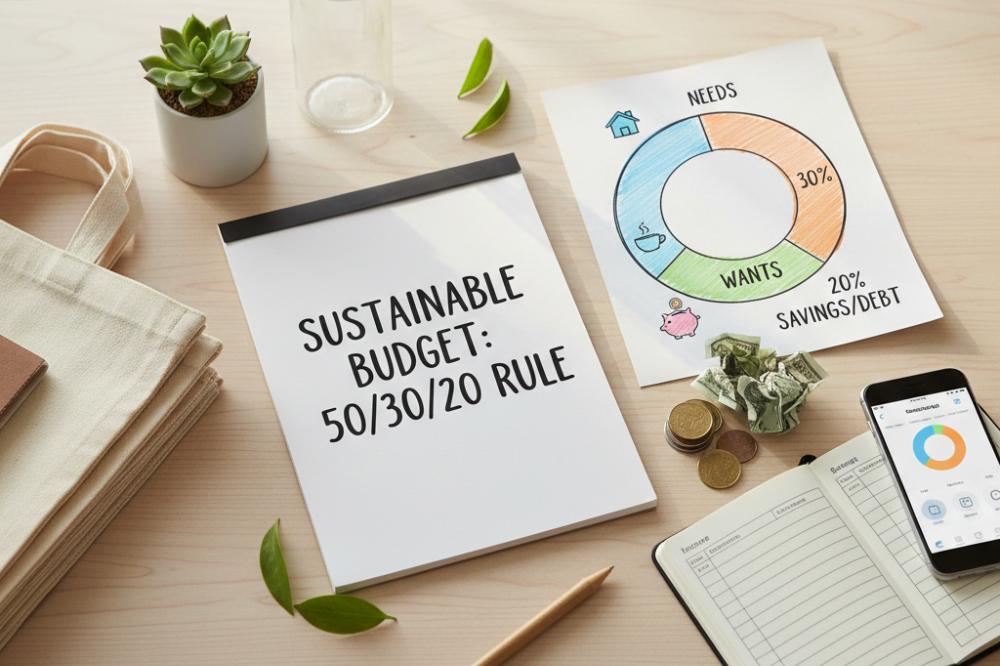Managing personal finances can be challenging, especially in a world full of instant purchases and lifestyle temptations. But the secret to long-term financial stability lies in understanding how to create a sustainable personal budget (50/30/20 Rule) — a proven formula that helps balance your needs, wants, and savings effortlessly. Whether you’re a student, professional, or entrepreneur, mastering this budgeting method can transform how you handle money and achieve your financial goals faster.
Understanding the 50/30/20 Rule
The 50/30/20 Rule is one of the simplest and most effective budgeting frameworks designed to promote both control and flexibility. Here’s how it works:
-
50% for Needs: Allocate half of your income toward essential expenses like rent, groceries, utilities, transportation, and insurance.
-
30% for Wants: This portion is for lifestyle choices dining out, entertainment, vacations, and other non-essential pleasures.
-
20% for Savings and Debt Repayment: The remaining income should go toward savings, investments, and paying off any outstanding debts.
This clear division not only helps you stay organized but also ensures that your financial plan is sustainable in the long run.
Why Sustainability Matters in Budgeting
A personal budget isn’t just about numbers it’s about creating a system that works for your lifestyle month after month. Many people fail to stick to budgets because they make them too restrictive. By learning how to create a sustainable personal budget (50/30/20 Rule), you’re ensuring that your approach balances practicality and enjoyment.
Sustainability in budgeting means:
-
You can cover essentials without stress.
-
You have room for enjoyment.
-
You’re consistently saving for your future.
This balance prevents financial burnout and helps build healthy spending habits that last.
Steps to Create a Sustainable Personal Budget (50/30/20 Rule)
1. Calculate Your Net Income
Start with your take-home pay the amount left after taxes and deductions. This figure forms the foundation of your budget.
2. Identify and Categorize Expenses
Make a list of your monthly expenses and categorize them under Needs, Wants, and Savings. Use budgeting apps or spreadsheets to track spending patterns.
Example:
-
Needs: ₹25,000 (rent, food, transport)
-
Wants: ₹15,000 (entertainment, shopping)
-
Savings: ₹10,000 (mutual funds, emergency fund)
3. Adjust and Prioritize
If your “Needs” exceed 50%, look for ways to reduce costs like using public transport or cooking at home. If your “Wants” category is eating into your savings, set small limits to bring balance.
4. Automate Your Savings
Set up automatic transfers to savings accounts or investment plans as soon as you receive your income. This ensures that your savings are consistent and not left to chance.
5. Review Monthly
Your financial situation may change salary hikes, new bills, or goals. Review your budget monthly and make adjustments to keep it aligned with your reality.
Benefits of Using the 50/30/20 Rule
1. Simplifies Financial Management:
You don’t need complicated formulas or financial knowledge. This method provides a clear framework for spending and saving wisely.
2. Encourages Healthy Spending Habits:
You become more conscious of where your money goes, helping you make better choices over time.
3. Supports Long-Term Goals:
By setting aside 20% for savings, you’re not just budgeting you’re building a secure financial future.
4. Reduces Stress and Financial Guilt:
Knowing your limits for wants allows guilt-free spending while keeping your essentials and savings secure.
Common Mistakes to Avoid
Even with the best budgeting strategy, pitfalls can occur. Watch out for:
-
Ignoring irregular expenses like annual insurance or car maintenance.
-
Mixing wants with needs, leading to overspending.
-
Not updating your budget, especially when your income changes.
Avoiding these mistakes ensures that your plan remains realistic and sustainable.
Adapting the Rule for Different Lifestyles
The beauty of learning how to create a sustainable personal budget (50/30/20 Rule) is its flexibility. You can tweak the percentages based on your personal goals:
-
For Students: 60/25/15 — since savings might be lower.
-
For Families: 55/25/20 — to handle larger fixed costs.
-
For High Earners: 40/30/30 — to accelerate investment growth.
The goal isn’t to follow the rule rigidly but to adapt it to your situation while maintaining balance.
Conclusion
Understanding how to create a sustainable personal budget (50/30/20 Rule) is more than a financial habit it’s a lifestyle change. By organizing your money into clear categories of needs, wants, and savings, you take control of your finances with confidence. This approach doesn’t demand sacrifice; it encourages mindful choices that align with your values and goals.







